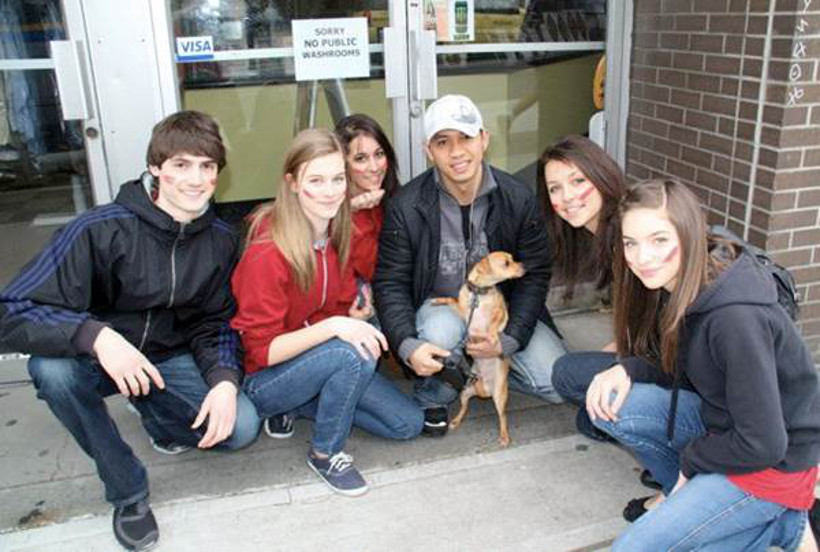Doors of Knowledge
Arts Education, Language Arts, Planning, Physical Education, Science, Social Studies
Sculpture Title:
Doors of Knowledge
Learning Lens:
Health and Social Education
Curriculum Access:
Applied Skills, Art, Drama, Math, Modern Languages, Career and Personal Planning, Physical Education, Home Economics, Science, Counselling/Psychology, Socials Studies, English, ESL, Language Arts, Social Justice
Big IDEA:
It all depends on how you look at it.
Guiding Question:
How can we see ourselves?
Strategies and Approaches:
Critical thinking, Socratic questioning, informal assessment, brainstorming, prompting, experiential learning, writing, reflection, inquiry, self assessment
Background for Students:
English artist, Patrick Hughes’s work Doors of Knowledge is comprised of doors, books, and landscapes that undergo various processes of optical illusions. Due to the interactive nature of the piece, one can note that as one begins to move around the piece, the ways in which viewers can approach and interact with the piece are infinite. Doors can swing open or shut, the landscape can be revealed or concealed, and the book cases can even appear to rotate. In keeping with the artists’ intent, one can approach anything in life with the attitude of: “it all depends on how you look at it.”
Informal Assessment:
In order to self-assess their lives, ensure students have the basic understandings around reflection, daily life activities (physical fitness, work, education, dietary aspects, and other responsibilities), work/life balance, socio-emotional wellness, etc.
Materials:
Handout and pencil. Handout is part of the download PDF file.
Curricular Challenge:
15-20 mins, Open/Reflect: Welcoming Multiple Interpretations
1. All students line up in a straight line and approach the installation straight on. As the students reach within two meters of the piece they split off in alternating directions (left/right) and continue to walk slowly around the piece.
2. As students reach the starting point after circumnavigating the work they are asked to face away from the piece and begin a mindfulness exercise.
A. Students are encouraged to disengage from their recent experience and their busy surroundings to practice mindfulness.
B. Direct students to ‘mindfully’ (quietly/individually) explore the piece and develop their own interpretation. More information on mindfulness for the classroom can be found here.
C. Direct each student to share their interpretation of the piece without judgement.
D. Connect students’ individual interpretations to the background information provided above.
3. Students are given the time remaining to experience the piece in as many ways as possible.
30 mins, Challenge
1. Ask students where they have learned the following life aspects: dietary intake, physical fitness, mental health, relationships. They may offer answers such as: the media, school, community centre, friends, family, and so on. Debrief these answers making connections to a balanced healthy life.
2. Provide students with an empty handout (attachment 1) and have students create their own ‘healthy living wheel.’
Students can then compare and self-assess their living wheels. You may have students discuss the difference in each student’s wheels and the difference between peoples lived experiences. Ultimately the goal is to work towards a healthy balanced life despite the variances.
3. Lastly, reveal a completed Living Wheel (attachment 2) or model your own Living Wheel. Have them either modify their charts if this is required and/or have them evaluate the completed Living Wheel.
Debrief: Debrief the differences in ‘Living Wheels’ and have students evaluate healthy living patterns. Connect to the idea that there is always room for self improvement and continuous growth. Practicing mindfulness and being aware of the present moment and daily practices may facilitate in making healthy life choices.
Creation: As a possible extension piece, have students take one area of their living wheel they have become more aware of and devise a plan to have this aspect of their life be more rewarding and increase healthiness, perhaps including some research.
